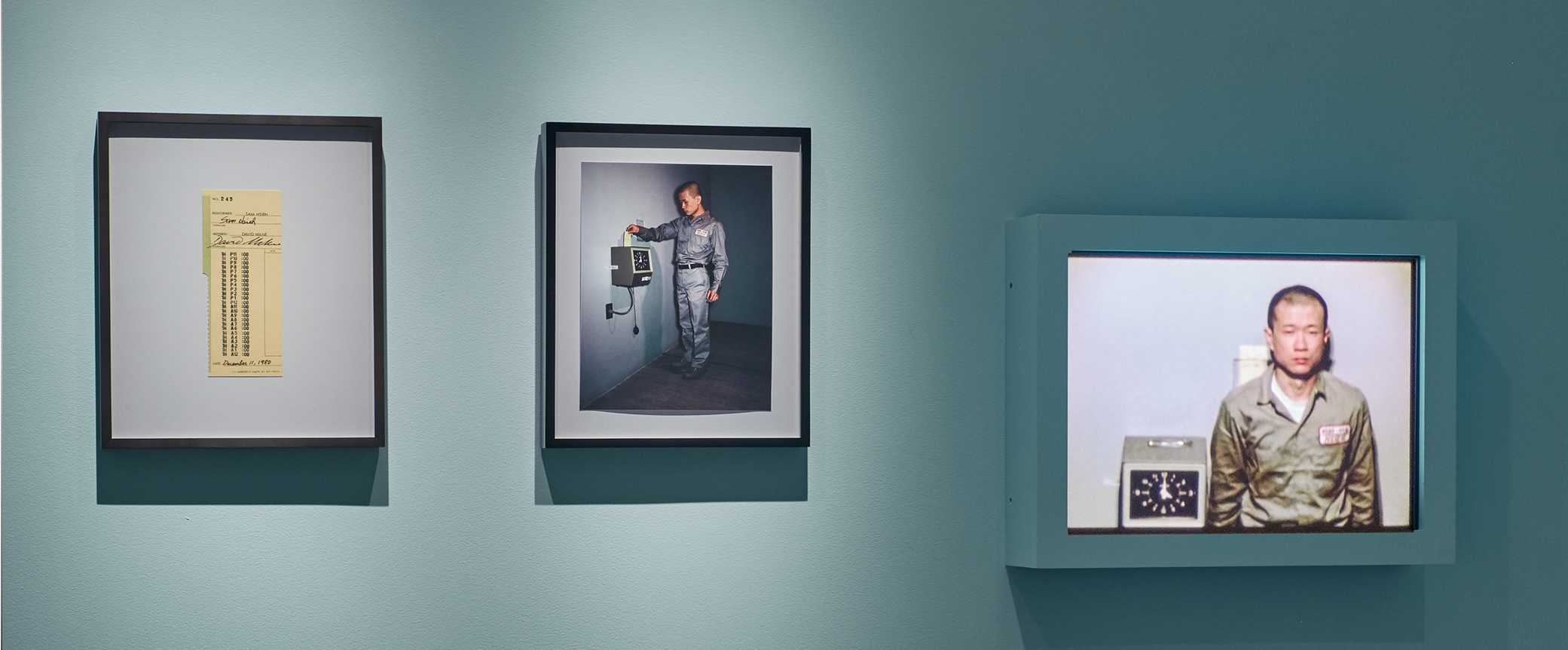
Tehching Hsieh in Measure Your Existence
By Christine Starkman
“You should not fear death. . . What you need is courage.” —Tehching Hsieh
The fleeting, impermanent here and now—in all its destruction, regeneration, and intense immediacy—is the ultimate reality. Measure Your Existence questions and expands on the Buddhist concept of impermanence through artworks by six contemporary artists who explore duration, memory, fate, history, loss, disappearance, reappearance, and repetition.
Each post in this series focuses on one artist, highlighting an artwork on view in the exhibition and another one from his or her oeuvre.
In the late 1970s and 1980s Tehching Hsieh carried out a series of one-year art performances in which he wrote out strict rules for how to conduct his life. His actions produced art according to those rules. By marking the precise measure of time and his existence, he tracked each moment and registered the concept of impermanence through his performance. His art is located in the immaterial nature of passing time, and Hsieh became part of time as he yielded to the material nature of his own body. The resulting ephemera from his performances is not documentation but rather evidence of the trace of his being.

In One Year Performance 1980–1981 Hsieh punched a time clock once every hour for 24 hours for 365 days. Hsieh had to rearrange his life around this one gesture. When he overslept, he failed to punch the clock. Hsieh missed clocking in 133 times out of 8,760, showing the contradiction between corporeal time and clock time. His performance collapsed the difference between productive “work time” and unproductive “passing time.”

Three months after spending one year inside his studio punching the time clock every hour, Hsieh began his next performance, One Year Performance 1981–1982. Hsieh brought this project into the public realm, declaring that he would live outdoors and not go inside any built structure for an entire calendar year. Hsieh’s fugitive presence outdoors involved abject conditions and attested to the ingenuity of survival. The performance required extreme levels of physical and psychological endurance.
For each of his one-year performances Hsieh typed a statement indicating the scope and limits of his actions. The artist signed, dated, and gave these documents to art curators and friends before starting the performance. They were considered contracts, binding him to the performance and supporting his ideas. Hsieh went to great lengths to fulfill the terms outlined in each statement.
Hsieh’s performances challenged the institutional rules and regulations of lived experience. In this way his work recalls Felix Gonzalez-Torres’s “Untitled” series, including Placebo (1991), which is also on display in the exhibition. The two artists interrogated the authenticity and definition of what constitute life and art. Hsieh performed his work in isolation once, never to be repeated, while Gonzalez-Torres’s work invites the viewer to participate and can be repeated in other venues simultaneously and in perpetuity. Both Hsieh and Gonzalez-Torres construct an intense, affective discourse on human existence, defying systems of control, time, and nature.
See Hsieh’s work in the exhibition Measure Your Existence at the Rubin Museum from February 7 to August 10, 2020.
About the Author
Christine Starkman is the guest curator for Measure Your Existence. She is interested in the global, transnational, and transcultural histories of modern and contemporary art between Asia, Europe, Latin America, and North America. Starkman has been a curator at the Art Institute of Chicago, Cleveland Museum of Art, and Museum of Fine Arts, Houston. She has an MA in Japanese art and architecture from the University of Illinois, Urbana-Champaign, and did PhD coursework in art history at Rice University.
Image Credit
Installation view of Tehching Hsieh’s work in Measure Your Existence at the Rubin Museum of Art; photograph by Jason Wyche

